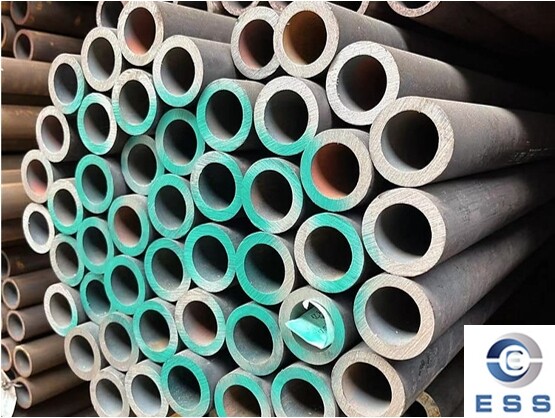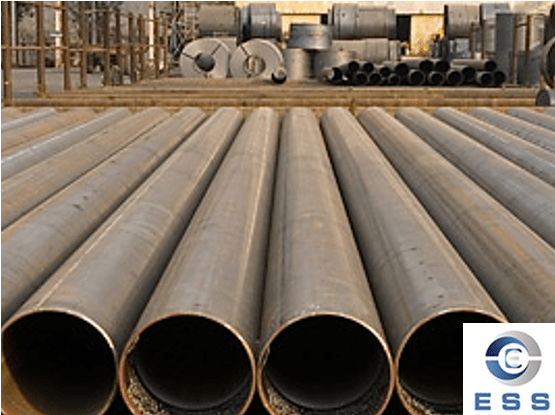
Seamless
steel pipe is a kind of pipe with excellent pressure resistance and high
temperature resistance, and is often used in petrochemical, fertilizer,
machinery, aviation and other fields. Seamless steel pipes are generally
divided into Grade I pipes (high-grade precision
tube), Grade II pipes (ordinary precision tube) and Grade III pipes
(general purpose pipe). How to distinguish them?
Distinguishing Grade I, Grade II and Grade
III of seamless steel pipes
1. Wall thickness
The wall thickness of seamless steel pipes
is different, which can be used to judge its grade. The wall thickness of Grade
I pipes is thicker, generally between 8-20mm, and the wall thickness is
uniform, and the error is controlled within a small range; the wall thickness
of Grade II pipes is between 5-12mm, and the thickness error is slightly larger
than that of Grade I pipes; the wall thickness of Grade III pipes is between
3-10mm, and the wall thickness uniformity is poor, and there may be a certain error.
In some high-demand hydraulic systems, Grade I pipes as hydraulic
tubes can ensure the stable operation and high-pressure bearing capacity of
the system.
2. Length
The length of seamless steel pipes is also
different. The length of Grade I pipes is longer, generally fixed length, which
can reach more than 12m; Grade II pipes are generally between 6-12m; the length
of Grade III pipes is very short, only between 3-6m, and is mainly suitable for
scenes with low length requirements, such as ordinary pipeline transportation
or temporary construction.
3. Accuracy
The accuracy of seamless steel pipes is
also an important indicator for judging grades. Generally speaking, Grade I
pipes have the highest accuracy, with deviations controlled within ±0.5mm; Grade II pipes have an accuracy within ±1mm; and Grade III pipes have an accuracy within ±1.5mm.
4. Material and chemical composition
The selection of materials and the control
of chemical composition are also key factors in determining the grade of
seamless steel pipes. Grade I pipes are made of high-quality steel, such as
20#, 20Cr, 12CrMoV, 15CrMoG and other high-performance alloy steels; Grade II
pipes have slightly lower material standards, but still meet industrial
standards such as GB/T, ASTM, DIN, etc.; Grade III pipes are made of ordinary
materials, and may use ordinary carbon
steel pipe or low-alloy steel pipe.
5. Mechanical properties
The mechanical properties mainly include
the tensile strength, yield strength and elongation of seamless steel pipes,
and different grades of pipes differ in these aspects. Grade I pipes have
excellent mechanical properties, high tensile strength and good ductility;
Grade II pipes have relatively balanced mechanical properties and meet the
requirements of conventional industrial use; Grade III pipes have lower
mechanical property requirements and are mainly used in low-load environments
with limited bearing capacity.
How to choose seamless steel pipes
correctly?
When purchasing seamless steel pipes, you
should choose the appropriate grade according to specific usage requirements:
1. For high-precision, high-pressure, and
high-temperature environments (such as boilers, petrochemical equipment, and
aerospace), it is recommended to choose Grade I pipes to ensure stable
performance, safety and reliability.
2. For general industrial purposes (such as
general fluid transportation, machinery manufacturing), you can choose Class II
pipes, which can ensure performance and control costs.
3. For general purposes (such as
low-pressure pipelines, support structures, etc.), you can choose Class III
pipes, which are economical and suitable for occasions with low requirements.
Summary
The grade of seamless steel pipes can be
judged more accurately by the differences in wall thickness, length, precision,
etc. When purchasing seamless steel pipes, you need to choose the pipes that
suit you according to the specific usage scenarios and needs.
Read more: Seamless Steel Pipe Sizes













 Eastern Steel Manufacturing Co.,Ltd not only improve product production and sales services, but also provide additional value-added services. As long as you need, we can complete your specific needs together.
Eastern Steel Manufacturing Co.,Ltd not only improve product production and sales services, but also provide additional value-added services. As long as you need, we can complete your specific needs together.










